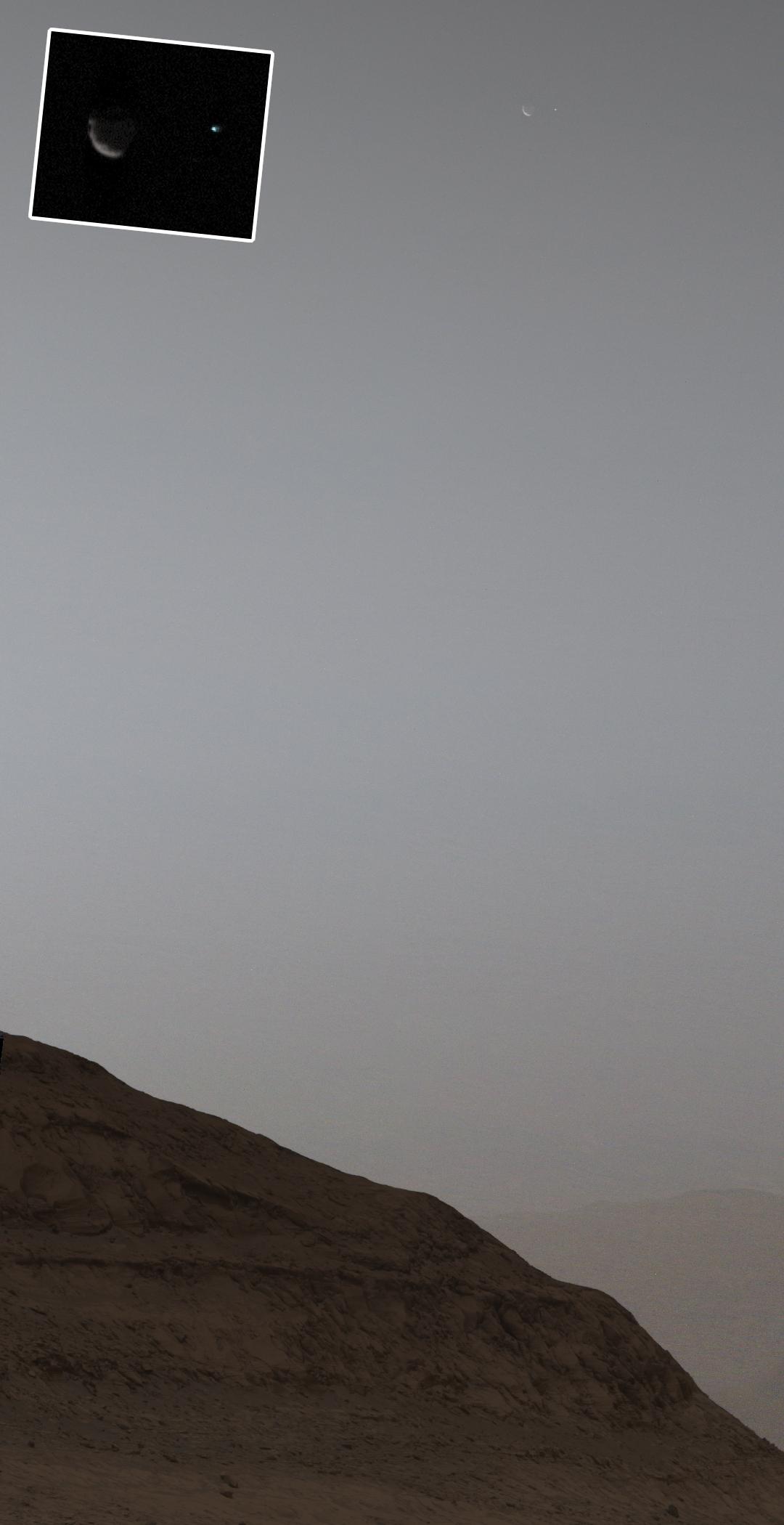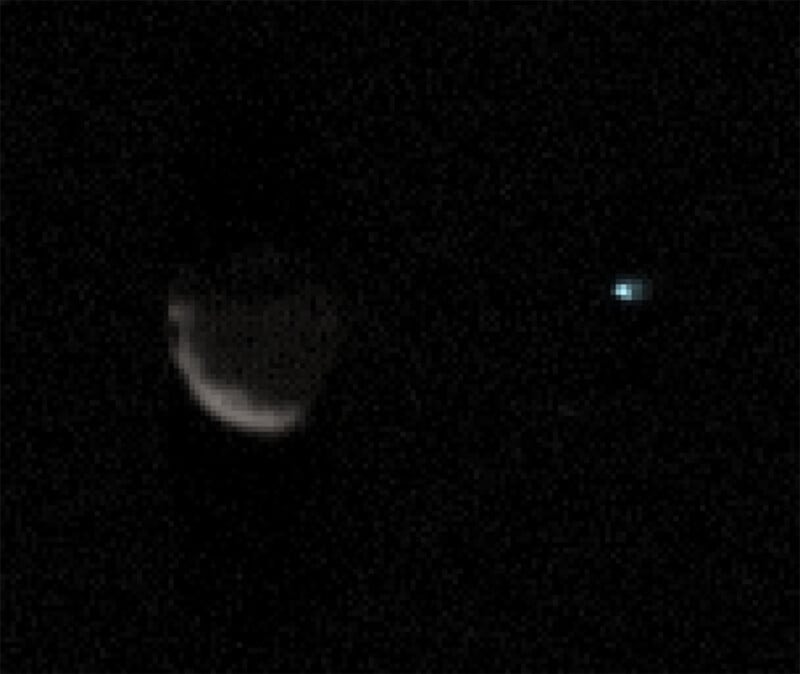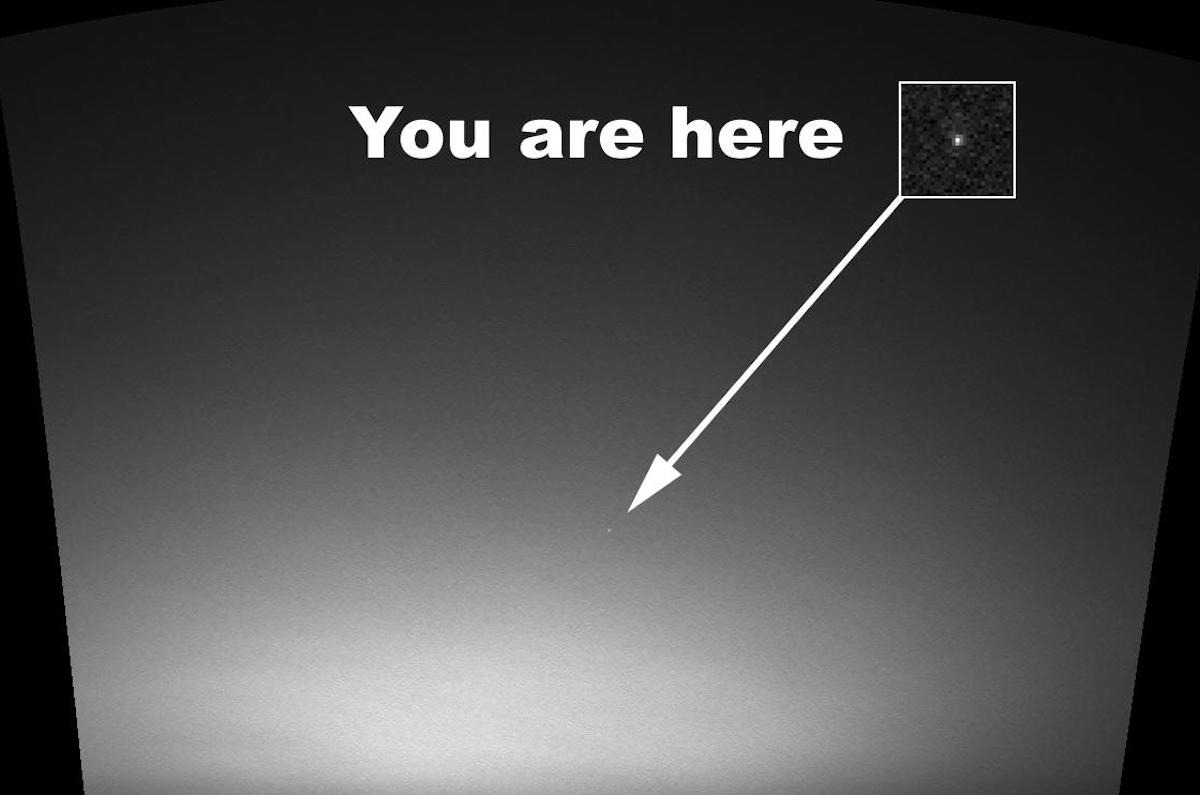NASA’s Curiosity Mars rover has taken an impressive image of one of Mars’ moons, Phobos, against the sky, where Earth is also visible. This image was taken on September 5, 2024 – the 4295th day of Curiosity’s mission to Mars – using the Mastcam camera aboard the rover.

Two celestial bodies can be seen in the photo: the larger object is Phobos, and to the right of it is the Earth. The image was obtained by combining several exposures – 5 short exposures and 12 long exposures.

The image shows the Martian sky above Mount Texoli, located on the lower part of Mount Sharp in Gale Crater, which the rover has been exploring since 2014. NASA notes that in the image, Earth seems like a small dot, smaller than the width of a thumb on an outstretched hand.
Pale Blue Dot
Photography prompts us to recall the famous words of Carl Sagan: “Look again at that dot. That’s here. That’s home.” He said this when commenting on an image of Earth called Pale Blue Dot taken by Voyager 1 from a distance of 6.4 billion kilometers. These words called humanity to unity for the common good, reminding us of our smallness in the Universe.

Although the Earth appears huge from our perspective, in the context of space it looks very small. Even to a Mars rover on a neighboring planet, the Earth looks like a tiny dot.
Other photos of Earth from Mars
The 2024 image is not the first. In 2014, Curiosity took a photo of the Earth from Mars, and before that Mars Global Surveyor took a photo of our planet and the Moon from the orbit of Mars.

These images demonstrate that the Earth, like Venus or Mercury, is in phases when observed from Mars. It is possible that in the future, Martian astronomers will record Earth’s phases or even observe our planet’s transits through the Sun.
In the meantime, such photos remind us of the fragility and insignificance of our planet in the limitless cosmos.
Earlier, we reported on how Mars’ moons turned out to be the remnants of a dead comet.
According to NASA


